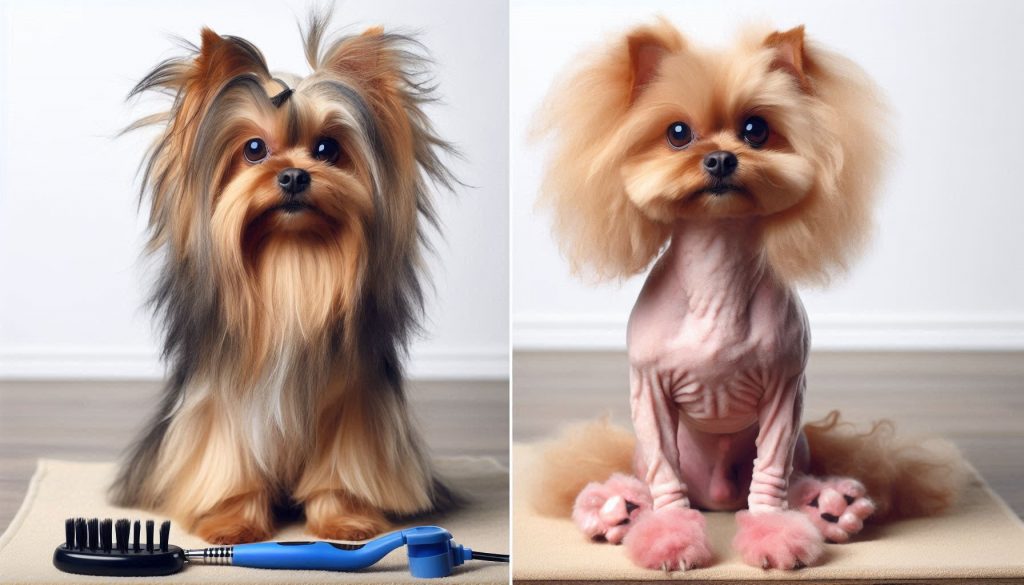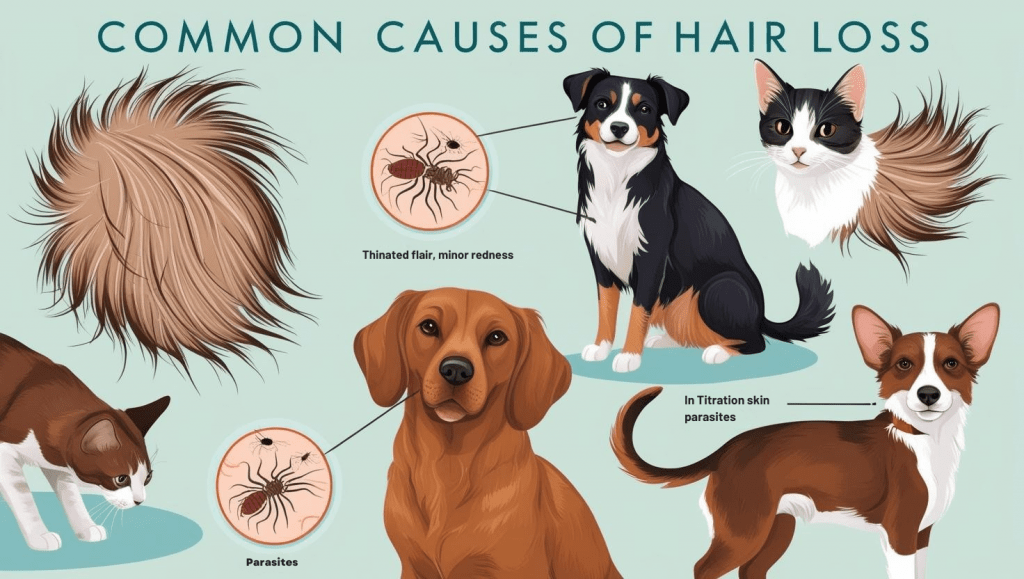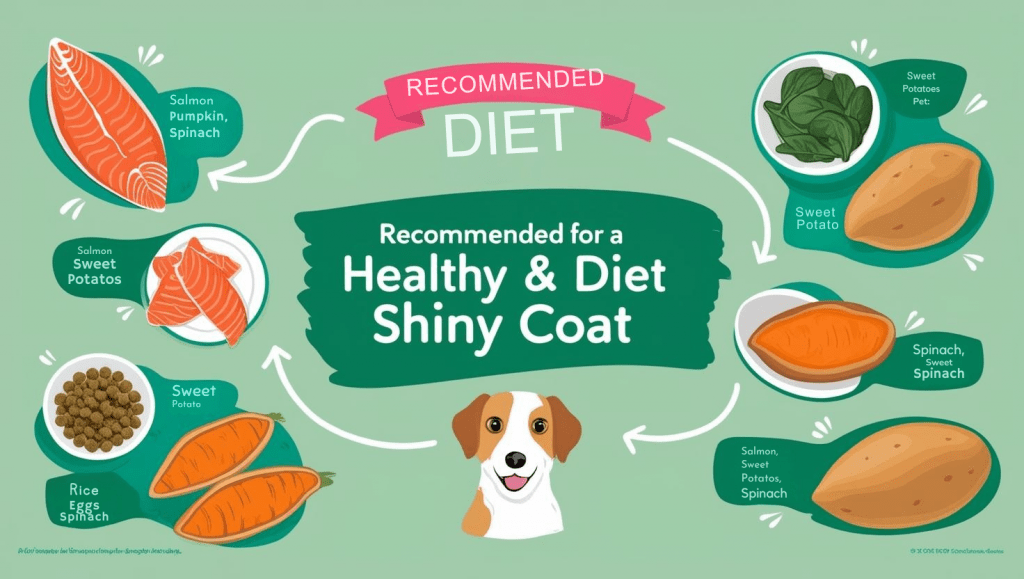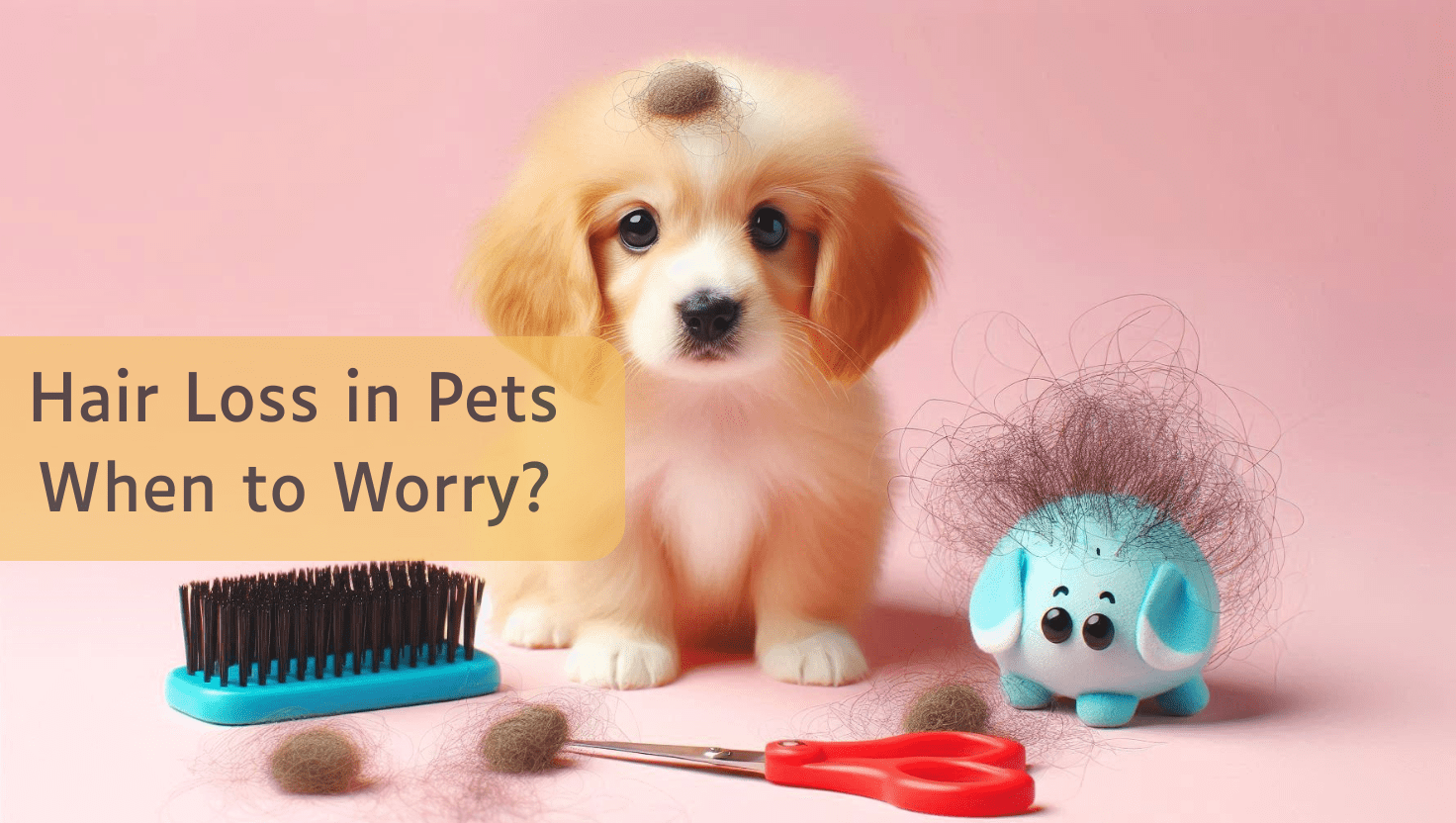Hair loss in pets can be concerning for pet parents. Whether it’s shedding, patchy bald spots, or excessive itching, understanding the causes and treatments is crucial for maintaining your pet’s health. In this detailed guide, we will explore the common causes of hair loss in pets, when to worry, and how to manage it with a veterinarian’s guidance.

Pet with healthy fur vs. pet with hair loss
Common Causes of Hair Loss in Pets
1. Allergies:
Pets can develop allergic reactions to food, environmental factors, or flea bites. Common signs include:
- Red, inflamed skin
- Constant scratching or licking
- Hair loss around ears, paws, and belly
Treatment:
- Identifying allergens through veterinary testing
- Switching to hypoallergenic diets
- Using vet-recommended antihistamines or allergy shots
2. Parasitic Infections
Fleas, ticks, and mites can cause severe itching, leading to hair loss.
Signs of Parasitic Infestation:
- Visible fleas or flea dirt
- Excessive itching and biting at the skin
- Scabs or open sores
Treatment:
- Regular use of flea and tick preventives
- Medicated shampoos prescribed by a vet
- Deep cleaning of the pet’s bedding and environment
3. Fungal and Bacterial Infections
Symptoms:
- Round patches of hair loss
- Crusty, flaky skin
- Redness and swelling
Treatment:
- Antifungal or antibiotic medications
- Medicated baths
- Keeping affected areas clean and dry

Common Causes of Hair Loss
4. Hormonal Imbalances
Conditions like hypothyroidism or Cushing’s disease can trigger hair loss in pets.
Signs:
- Dry, brittle coat
- Weight gain or loss
- Lethargy
Treatment:
- Blood tests to diagnose hormonal issues
- Lifelong medication to balance hormone levels
- Nutritional adjustments

Recommended pet diet for a healthy coat
5. Nutritional Deficiencies
A poor diet lacking essential fatty acids, vitamins, and proteins can affect coat health.
Improving Diet for Healthy Fur:
- Adding omega-3 fatty acids to meals
- Ensuring a protein-rich, balanced diet
- Consulting a vet for dietary recommendations
6. Stress and Anxiety
Pets can experience anxiety-induced hair loss due to changes in their environment or routine.
Symptoms of Stress-Induced Hair Loss:
- Over-grooming or excessive licking
- Bald spots
- Changes in behavior (hiding, aggression, etc.)
Solutions:
- Creating a calming environment
- Engaging in regular play and exercise
- Using pheromone diffusers or anxiety-reducing supplements
When to Worry About Hair Loss in Pets
While shedding is normal, excessive or patchy hair loss should raise concerns. Consult a vet if you notice:
- Sudden bald patches
- Persistent itching and irritation
- Open sores or wounds
- Skin discoloration or foul odor
Early detection and timely treatment can prevent further complications.

Vet examining a pet for skin issues
How to Treat Hair Loss in Pets with a Vet’s Guidance
Step 1: Diagnosis
- Physical examination and skin scrapings
- Allergy testing or blood work
Step 2: Treatment Plan
- Medications for infections or allergies
- Topical treatments like medicated shampoos or ointments
- Dietary modifications
Step 3: Preventive Care
- Regular grooming and bathing
- Providing a stress-free environment
- Ensuring proper nutrition
Home Remedies for Hair Loss in Pets
While home remedies cannot replace veterinary care, some natural treatments may aid recovery:
- Coconut oil: Moisturizes dry skin and reduces inflammation
- Oatmeal baths: Soothes itching
- Aloe vera gel: Helps heal irritated skin
Conclusion
Hair loss in pets is often a symptom of underlying health issues. Identifying the cause early and working with a veterinarian ensures effective treatment and recovery. A well-balanced diet, proper grooming, and a stress-free environment are key to maintaining a healthy coat.



